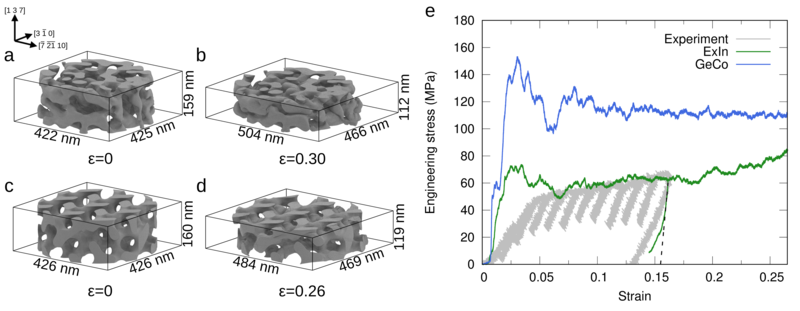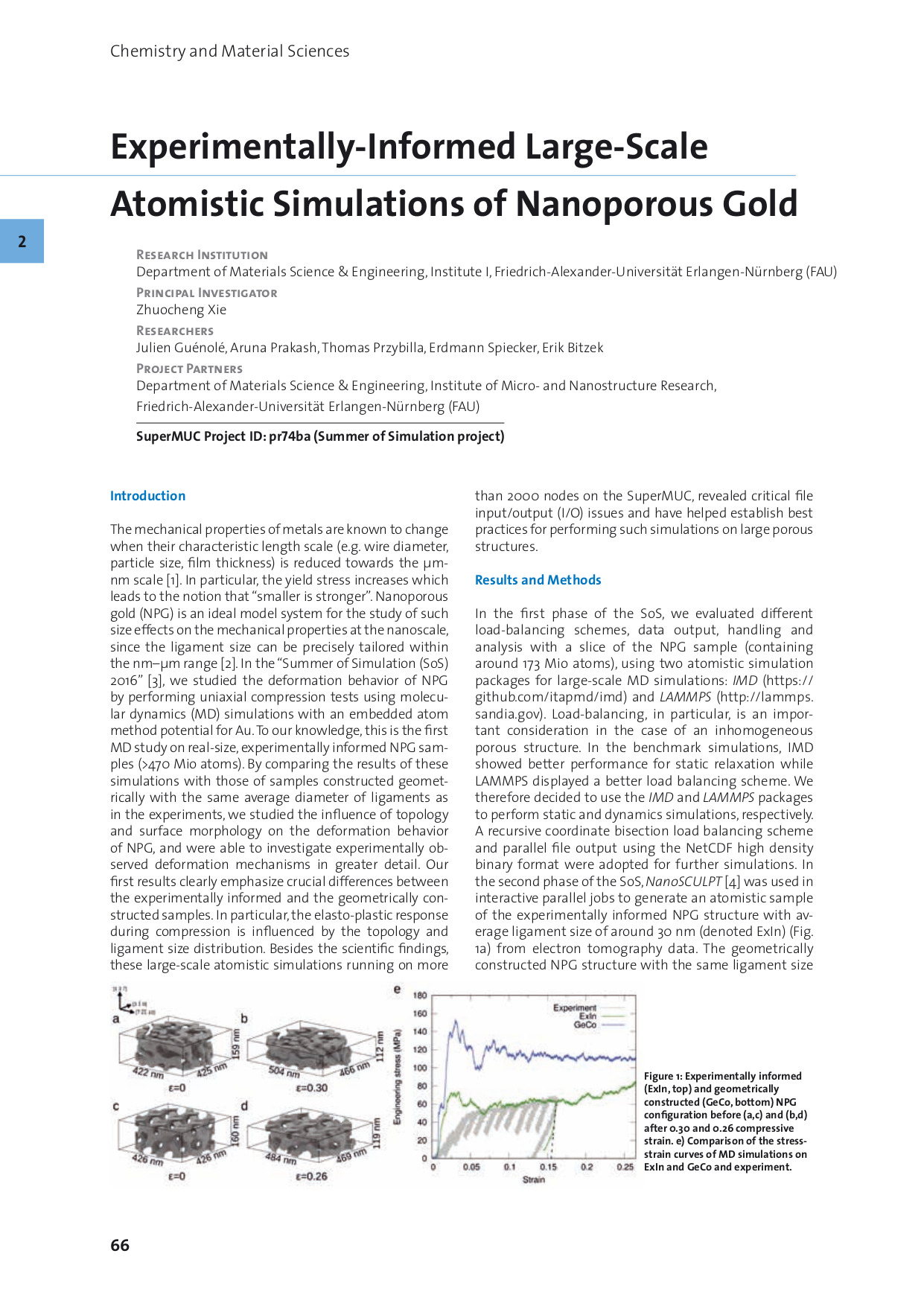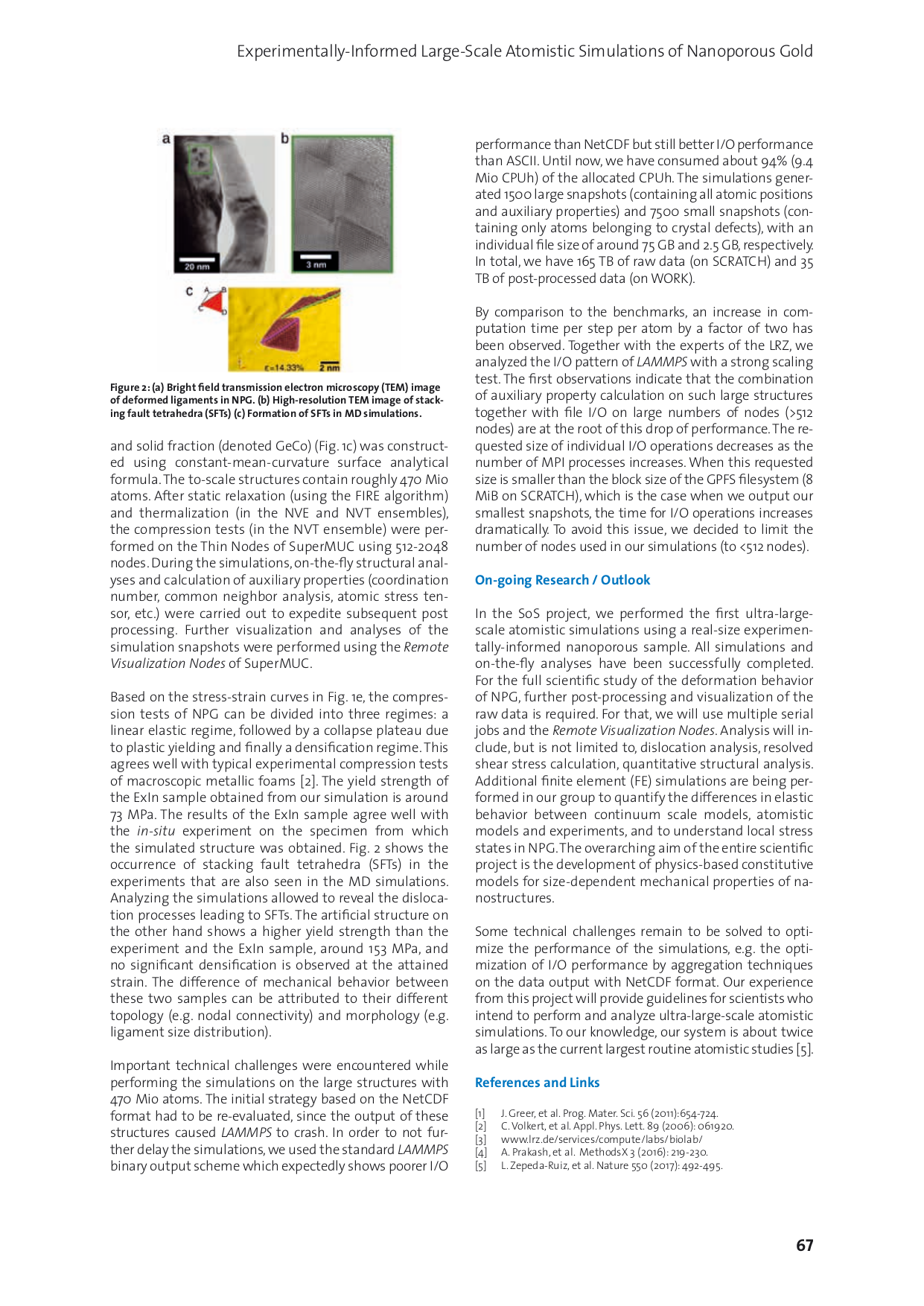Thanks to the continuous increase of computationnal power available at the national and international high-performance-computating centers, atomistic simulations in material science are nowaday able to consider sub-micrometric sample with a reasonable accuracy. This give birth to cross-scale simulations that, instead of applying sophisticated multi-scale approach, address the scientific problem directly at multi-scale (atom, dislocation, microstructure). Complex on-the-fly and post-process analyses are involved to process the tremendous amount of data generated by such large-scale approaches.
Here, we perform the experimentally-informed cross-scale atomistic simulation of the deformation of nanoporous gold. The systems containing 470 Mio atoms has required 10 Mio CPUh of highly parallelized molecular dynamics in order to generates approximately 165 TB and 35 TB of raw and post-processed data, respectively.

Fig. 1: Experimentally informed (ExIn, top) and geometrically constructed (GeCo, bottom) nanoporous gold atomistic configuration before (a,c) and (b,d) after 0.30 and 0.26 compressive strain. e) Comparison of the stress-strain curves of MD simulations on ExIn and GeCo and experiment. [SuperMuc Results Report, 2018]


References:
- https://www.lrz.de/services/compute/supermuc/magazinesbooks/2018_SuperMUC-Results-Reports.pdf
- http://dc.engconfintl.org/nanomechtest_vi/105/
